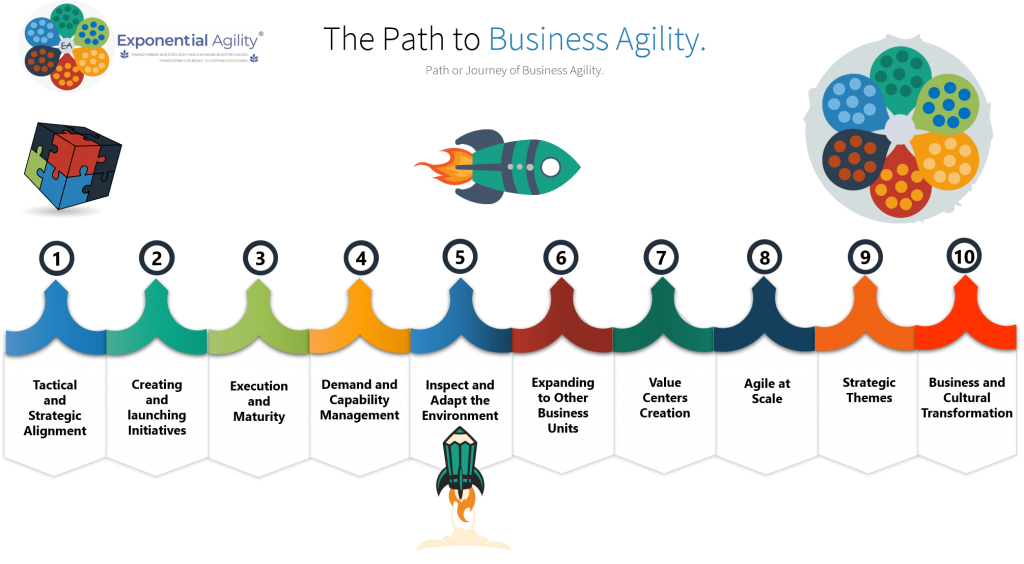In our last capsule we have check the Core of Business Agility.
Now, in this capsule, we will go over a Journey to build Business Agility in our company and we are going to start with the first activity of this path.
- In order to build an Agile Business,
- we have drawn “a Path to reach it”, It’s one.
- it has to said that there are a lot as the imagination can conceive,
- Remember that a Journey or Path is a transversal cut,
- a lineal history of a complex phenomenon,
- nonlinear phenomena in order to be understood and simplified.
- It starts with the following activities:
- Tactical and Strategic Alignment.
- Creating and launching Initiatives.
- Execution and Maturity.
- Demand and Capability Management.
- Inspect and Adapt the Environment.
- Expanding to Other Business Units.
- Value Centers Creation.
- Agile at Scale.
- Strategic Themes or Portfolio.
- Business and Cultural Transformation.

The first activity to build an Agile Business is:
- Tactical and Strategic Alignment:
- According to the Business Agility Institute,
- business agility is “The ability and willingness of an organization to adapt, create and harness change for the benefit of its customers.”
- This simple statement exposes the dramatic mindset shift necessary for agile organizations.
- Where the way you respond to the market is more reliably predictable than the way the market responds to you.
- When we build an Agile Business one of the first things, we do is to
- review the future state of the Agile Organization,
- according to our experience we have designed an Exponential Business Agility Model
- which describe the future basis of an Agile Business, it’s composed by:

- Customer: Composed by frameworks to gain customer centrality and empathy.
- Collaborator: Focused on the mindset growth of business people at all levels.
- Organizational Capabilities: Internalizing lessons learnt and cultural and structural agility, accompanied by government.
- Team Agility: Focused on team maturity for high performance building and wide collaboration.
- Agile Delivery: Organizing delivery on programs and products, preparing Agile for Scaling and measuring the business outcomes.
- Agile Discovery: Finding the value flows, from the agile initiatives to business inception.
- Portfolio: Align the strategy, tactics & investments, budgeting the demand & capacity management and all the operations.
- Strategic Agility: Create a shared purpose and vision to inspire action, an alignment requires creating cohesion to the organization from the internal and external perspective.
That’s all for now, in the next capsule we will continue at this first step reviewing an example of the future state.
